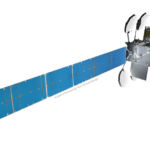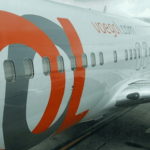
Competition Appeal Tribunal Rules in Favor of Inmarsat, Ofcom
The Competition Appeal Tribunal (CAT) in London ruled in favor of Inmarsat and Ofcom. The CAT handed down its judgment dealing with Viasat’s challenge to Ofcom’s January authorization of Inmarsat’s U.K. complementary ground component (CGC), forming part of Inmarsat’s European Aviation Network (EAN).
The Tribunal comprehensively found in favor of Ofcom and Inmarsat, and determined that all of Viasat’s arguments failed. On that basis, the Tribunal dismissed Viasat’s case. The CGC authorization granted by Ofcom to Inmarsat for the EAN system remains in full force and effect.
“We welcome today’s decision and look forward to the European Aviation Network delivering a world-class Wi-Fi experience to airline passengers in the U.K. and throughout Europe,” said Inmarsat Chief Executive Officer (CEO) Rupert Pearce. “EAN represents an outstanding technological innovation, which has taken years of hard work and commitment to deliver and I am delighted to say it will very shortly be available to passengers across Europe.”

FlexAir to Provide IFC to Government Aircraft
Intelsat General Communications, a wholly owned subsidiary of Intelsat S.A., revealed that it is launching FlexAir — a managed end-to-end service providing In Flight Connectivity (IFC). This service will be providing support to military aircraft in the way of communications and Intelligence, Surveillance, and Reconnaissance (ISR) applications. It was also revealed that Comsat will be the first solutions partner to market FlexAir to U.S. government aviation users and coalition partners. FlexAir’s broadband service utilizes Intelsat’s global Ku-band satellite fleet and integrates layers of High Throughput Satellite (HTS) coverage from Intelsat’s Epic fleet. FlexAir also offers committed capacity for ISR applications such as sensor data, video transmission, and communications relay to deliver immediate access at 3 Megabits per second from the aircraft with optional scalability to 6 Mbps. “FlexAir answers the call and delivers the performance and agility that government aviation requires,” said Intelsat General President Skot Butler.“With the multi-layered coverage of FlexAir, our government customers can ensure that each aircraft has global access and guaranteed availability whenever or wherever it is needed. The scalability, throughput, and improved economies of scale provided by FlexAir enable government users to quickly address changing broadband demands while providing maximum mobility in the most cost-effective manner.”
ViaSat Eyes Future Growth in Connecting Commercial, Defense Aircraft
ViaSat estimates an addressable market size for more than 25,000 fixed- and rotary-wing U.S. military aircraft to be equipped with its in-flight connectivity technology in the next several years. The company is well known for its growth in providing in-flight internet to commercial airlines in recent years. However, there are sizable opportunities for equipping defense aircraft in the near term as well, according to ViaSat CEO Mark Dankberg. “Think of the U.S. Defense Department as the world’s largest aircraft operator,” Dankberg told analysts during the company’s second quarter fiscal year 2019 earnings call. “We estimate about 25,000 fixed- and rotary-wing aircraft that are candidates for broadband satellite connectivity. Of those, we estimate about 5,200 we could serve with our current suite of in-flight connectivity products,” he said. Dankberg presented fleet equipage analysis showing U.S. rotary-wing combat aircraft as the highest addressable market in the near term. That segment is followed by U.S. VIP tankers and intelligence, surveillance and reconnaissance (ISR) fixed-wing aircraft. If ViaSat does win contracts for those 5,200 airframes it has identified, it would be an expansion of their existing presence in the U.S. defense segment. In September, the U.S. Defense Information Systems Agency (DISA) awarded ViaSat an eight-year contract to provide U.S. Government Senior Leader and VIP aircraft with in-flight broadband and connectivity services. The award was an extension of the company’s ongoing AMSS IIa contract, which equips select U.S. Air Force and Foreign Military Sale (FMS) VIP and other military aircraft with access to a Hybrid Adaptive Network (HAN) that allows users to seamlessly operate across government and private sector networks. Some of the biggest differences in connectivity needs for commercial and defense aircraft is that airliners fly scheduled routes and more hours per year, said Dankberg. In contrast, the missions flown by defense aircraft are substantially more demanding in terms of how broadband is being used on those flights. On the commercial side, ViaSat estimates demand for 28,000 airliners requiring broadband over the next five years, using projected commercial aircraft sales from Boeing’s 2018 commercial market outlook data. Dankberg said commercial in-flight connectivity services will be the biggest individual driver of financial revenue growth in 2019. El Al Israel Airlines began flying with ViaSat, and Finnair began passenger in-flight testing with ViaSat during the period. The company also won new contracts to equip 100 American Airlines Airbus A321neos, 18 Boeing 737 MAX aircraft for Aeromexico and a new contract for La Compagnie, an all business-class Boeing 757 operator whose only route is New York to Paris. The company also recently picked up major wins in business aviation, becoming the line-fit option on the new Embraer Praetor 500 and 600 aircraft that are scheduled to enter into service by the third quarter of 2019. Dankberg believes a major differentiator for ViaSat in the in-flight connectivity market has been its ability to design and build its own in-flight connectivity, wireless IFE systems and terminals. To enable the type of satellite-based connectivity provided by ViaSat, aircraft need to be equipped with an antenna, power supply, modem, IFEC server and wireless access points. The company’s approach to winning installations on more commercial airliners has focused on establishing enough bandwidth, capacity and speed to enable operators to use business models that give passengers access to the internet on their mobile devices free of charge. “We believe our share has more than doubled in two years to 20% and could grow to over 25% by this time next year. We believe we’ve taken share across the board and while establishing a reputation for performance yielding exciting regional and global growth opportunities. We see more airlines coming to believe that full, fast, and free Internet access is going to be the benchmark and we’re the only service provider that can do that at scale,” said Dankberg.
Gilat Receives Certification for Dual-Band Aero Terminal
Gilat Satellite Networks‘s dual-band aero terminal has passed the standard for the environmental testing of avionics hardware, and received the DO-160 certification. Gilat’s Ku-/Ka-band AeroEdge 6000 is now ready to install in all commercial aircraft. The AeroEdge 6000 is a terminal which can operate in both Ka- and Ku-bands, and aims to provide satellite broadband communication for high-speed internet and multimedia applications for commercial airlines. This terminal could help provide opportunities to High Throughput Satellite (HTS) operators, In-Flight Entertainment and Connectivity (IFEC) service providers, and airlines who want to leverage In-Flight Connectivity (IFC) opportunities with the flexibility to use both the Ku- or Ka-bands. According to the release, Gilat’s terminal is the only open architecture terminal with the ability to switch instantaneously during flight between Ka- and Ku-bands, dependent on capacity coverage and availability. The terminal includes Gilat’s ER 6000-A Ku/Ka antenna, SkyEdge II-c Taurus Modman, Ku-/Ka-band Antenna Networking Data Unit (KANDU) and Wavestream’s Ku-/Ka-band Radio Frequency Units (KRFU). Gilat expects to see the AeroEdge 6000 flying commercially in 2019.
GOL is Gogo’s Connected Aircraft Service Launch Partner
GOL Linhas Aereas will become the launch partner for Gogo’s aircraft data service, wireless quick access recorder (QAR) and automated turbulence reporting in an effort to bring increased access to real-time flight operational information for the Brazilian airline’s pilots and maintenance technicians. Under the new partnership, GOL will use Gogo’s 2Ku satellite-based connectivity service to give its pilots real-time graphical weather updates and transmit critical flight data about systems and components to its maintenance technicians. GOL first added Gogo’s 2Ku connectivity to its fleet of Boeing 737-700s and Boeing 737-800s in 2016. The airline has now installed 2Ku across 91 of its 119 in-service 737s and can enable the use of the wireless QAR, automated turbulence and data service with some re-wiring and software updates. Gogo describes its aircraft data services solution as using onboard aircraft digital flight data acquisition units with active ARINC 717 bi-polar ports transmitting data about aircraft engines, wings and other systems and components to Gogo’s airborne control processor unit (ACPU2). The ACPU2 acquires, records and compresses the 717 data prior to transmitting it to the ground over the 2Ku network. This capability is enabled by ACPU2’s quad-core i7 processors, 2.56 terabytes of solid state drive storage, six MCU ARINC 600 design and 12 different ethernet ports. “This solution eliminates the need for expensive media and manual retrieval from the aircraft; ultimately, improving the timeliness of the subsequent analysis,” Chad Gill, Gogo’s head of product management for connected aircraft services told Avionics International. Gill described the new partnership as a “full fleet deal,” where GOL will be able to make the aircraft data services solution active as soon as the airline’s pilots and maintenance team is ready. The wireless QAR upgrade will require some wiring changes that GOL will work into its fleet “over the next few years,” Gill said. The new partnership announcement with GOL is the latest example of Gogo’s efforts to provide airlines with technology that allows them to go beyond the use of connectivity for internet access by passengers in aircraft cabins. Delta Air Lines pilots for example, have been using using an EFB application to set threat index alerts from existing avionics sensors installed on their aircraft capable of using algorithms developed by the National Center for Atmospheric Research. The algorithms use a combination of aircraft vertical accelerometer data and atmospheric state data, including aircraft-specific behavioral data such as pitch, roll and wind speed to formulate app-based turbulence reports for pilots using Gogo’s in-flight connectivity network. “Gogo is rapidly moving beyond passenger connectivity to connect pilots, flight attendants and the aircraft itself so airlines can access real-time information,” said John Wade, president of commercial aviation at Gogo. “GOL has been at the forefront of technology adoption in the aviation industry; now they will be leading the way in leveraging aircraft data to drive efficiency.” GOL will also be one of many airlines flying with Gogo’s 2ku antenna that will be able to upgrade to lower latency low earth orbit (LEO) satellite connectivity in the future. Gogo CEO Oakleigh Thorne addressed its 2Ku antenna de-icing issues, financial challenges and future business model changes for the company during the company’s second quarter earnings call in August.
Inmarsat Sees Q3 Growth in Aviation
Inmarsat released its results for third quarter (Q3) 2018, and nine months ending Sept. 30 2018. During Q3 2018, overall group revenue (ex. Ligado) was $336.4 million, an increase of $12.6 million from the same period in 2017. Group Earnings Before Interest, Tax, Depreciation, and Amortization (EBITDA), ex. Ligado, increased by $12.7 million to $173.6 million, reflecting higher revenue, particularly from Aviation, and lower costs. Inmarsat’s Aviation segment saw Q3 revenues grow to $68.2 million, an increase of 34 percent compared to the same period in 2017. There was also double digit revenue and EBITDA growth, with an improved margin outlook for Financial Year (FY) 2018. A strategic alliance with Panasonic is helping Inmarsat drive future In-Flight Connectivity (IFC) growth. Inmarsat’s Maritime segment also saw a decrease in revenue — Q3 2018 revenue was $135 million, whereas it was $143 million in Q3 2017. Although Maritime saw strong revenue and market share growth through Fleex Xpress (FX) in the Very Small Aperature Terminal (VSAT) segment, FleetBroadband (FB) revenues declined, reflecting customer migration to FX and increased VSAT competition.
Airlines Look to the Cloud for Responsive Customer Service
It’s no secret that customer experience is a key competitive differentiator within the airline industry. However, delivering on customer demands for more personalized travel experiences and maintaining high levels of customer service are increasingly challenging as the global tourism industry steadily increases and record numbers of travelers take to the skies for the holidays — an estimated 4.27 million forecasted for the U.S. by AAA in 2018. Cloud computing can be a game-changer to help airlines reinvent the customer experience and keep up with these rapid growth levels. During the first wave of cloud computing, the focus across industries – including for airlines — was all about adopting cloud infrastructure to help drive information technology (IT) efficiency and keep costs low. The cloud helped airlines scale their infrastructure more quickly to keep up during peak times and rapidly roll out new apps and services for both passengers and employees. To date, most companies are still in the early stages of their cloud journey, with research showing that only about 10 to 20 percent of systems are on the cloud today. As we enter the next chapter of cloud, airlines have a major opportunity to use the cloud in new ways to deliver even more personalized and responsive customer service. The next 80 percent of the cloud opportunity is about more than just “infrastructure as a service.” It’s about leveraging the cloud to deliver new experiences and drive new growth. The rebooking process is one area where the cloud is already helping airlines transform the customer experience. Adopting cloud helps remove the constraints of existing legacy architectures, platforms, organization, development and operations approaches to help respond better and faster to customer needs. When one of the world’s largest airlines decided to give its customers the ability to take control of the rebooking process via its website, mobile app and self-service kiosks, the company turned to the cloud. Within just a matter of months, the airline was able to launch a new, more dynamic rebooking app across airports, transforming its approach to customer service by providing new levels of self-service for travelers. Beyond enabling travelers to take more control in the rebooking process, the cloud can also help airline employees to deliver improved customer service. For example, Lufthansa Group uses a cloud-based system to empower its flight managers by delivering data aggregated from across multiple systems to employee mobile devices. Traditionally, flight managers have had to login to multiple systems numerous times a day to access information about flight assignments. But equipped with a dedicated app, Lufthansa’s flight managers have better access to current booking and boarding status, baggage status, inbound flights, aircraft and crew rotation, and can respond more intelligently and precisely to passenger needs. The cost of failure is particularly high in an industry that leans so heavily on creating a strong customer experience. Just as flight delays and cancellations are a fact of life in air travel, so is the loss of customer trust and loyalty when airlines mismanage rebookings or poorly communicate itinerary changes. As the industry moves to embrace innovative digital self-service offerings that run on the cloud — and relieve some of the pressure on airline customer service employees — customers must feel confident that interactions with their airline via the cloud will ultimately help get them where they want to go. However, navigating the next phase of the cloud journey requires a new approach. Airlines are often sitting on decades of investment in existing IT systems, and newer technologies such as apps using artificial intelligence (AI) and analytics need to work alongside those legacy systems and applications. A hybrid multi-cloud approach is crucial to integrating these ecosystems into secure, reliable and consistent customer experiences, even though the applications and data might be coming from multiple public clouds, private clouds and legacy systems. Airlines that are able to successfully take a hybrid multi-cloud approach will be best positioned to meet the needs of their customers through deeply responsive customer service, across everything from launching new self-service channels and delivering real-time information direct to the hands of employees to broadening their offerings to include personalized travel packages. John Szatkowski is a global offering leader of travel and transportation at IBM.

First LEO In-Flight Connectivity Demonstration Complete
Gilat Satellite Networks, Global Eagle, and Telesat played a key role in the first demonstration of an in-flight aircraft communicating at broadband speeds with a Low Earth Orbit (LEO) satellite system. The industry milestone was achieved using Global Eagle’s Albatross Onetest aircraft with Gilat’s aero modem and Telesat‘s Phase 1 LEO satellite, launched earlier this year. The testing included a successful demonstration of seamless connectivity and switchover between Telesat’s Geostationary Orbit (GEO) and LEO satellites. Global Eagle is a provider of satellite-based broadband connectivity, television, and entertainment services, content and data analytics to aviation, maritime, enterprise, and government markets “Global Eagle is confident that Telesat’s planned LEO constellation will fundamentally improve the passenger experience for in-flight broadband with industry-leading latency, throughput, and global coverage,” said Global Eagle Executive Vice President (VP) Per Noren. “We chose to collaborate with Gilat on LEO baseband technology due to their proven multi-application platform and clear LEO roadmap.” “Gilat’s solution has now proved its technological advantage of supporting not only multiple applications, satellites, bands and beams, but also a world first transition between satellites in multiple orbits,” said Gilat VP of Mobility and Global Accounts Ron Levin.













